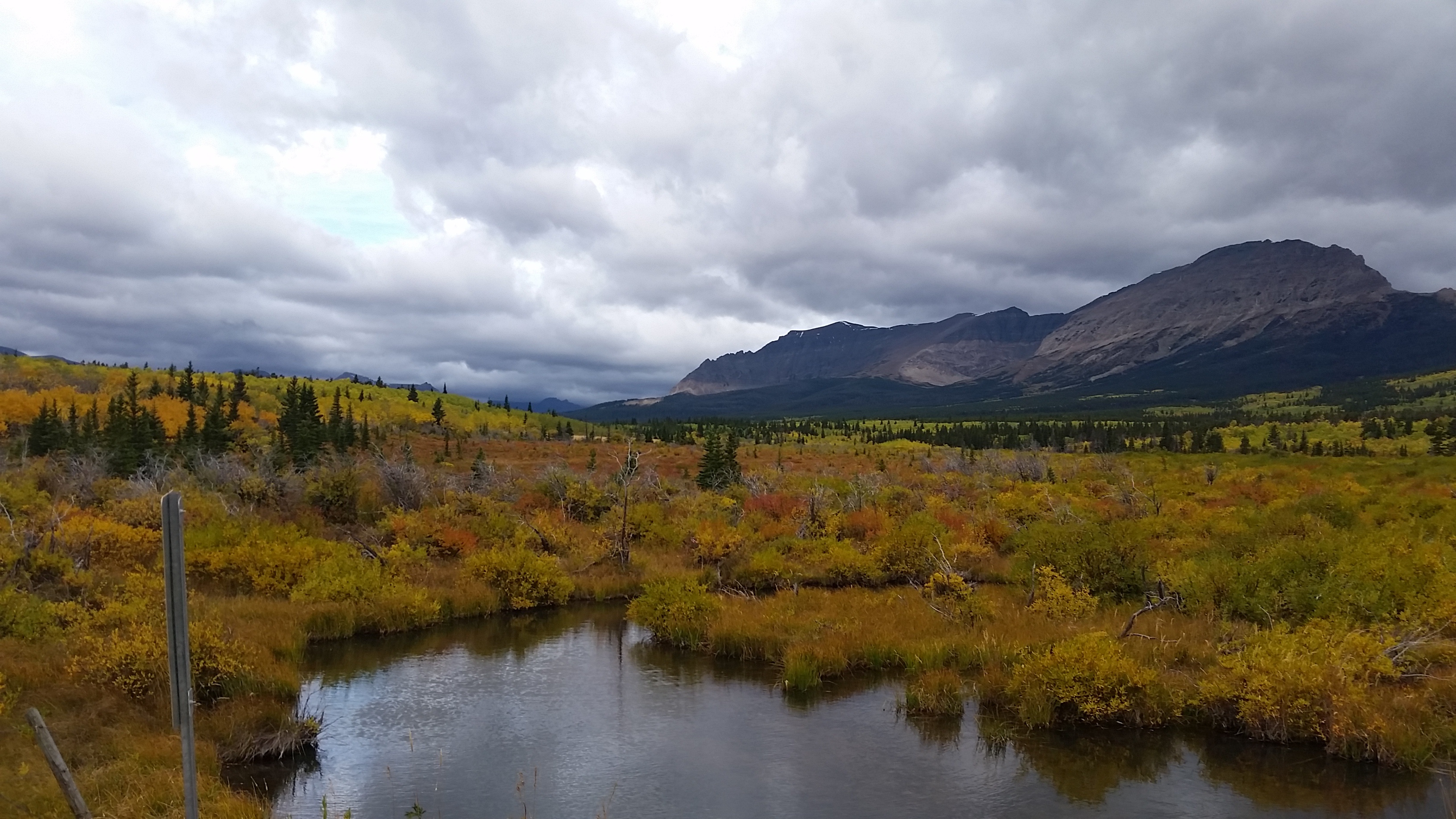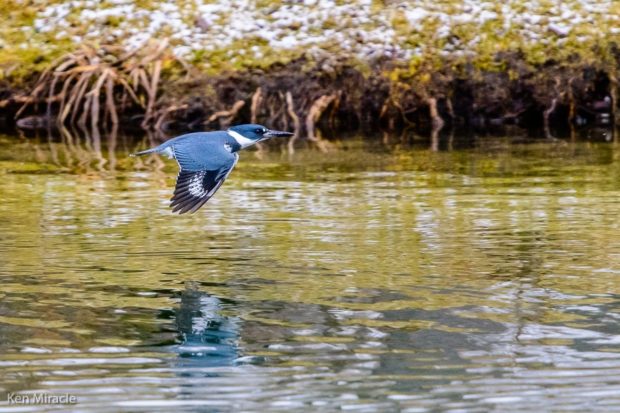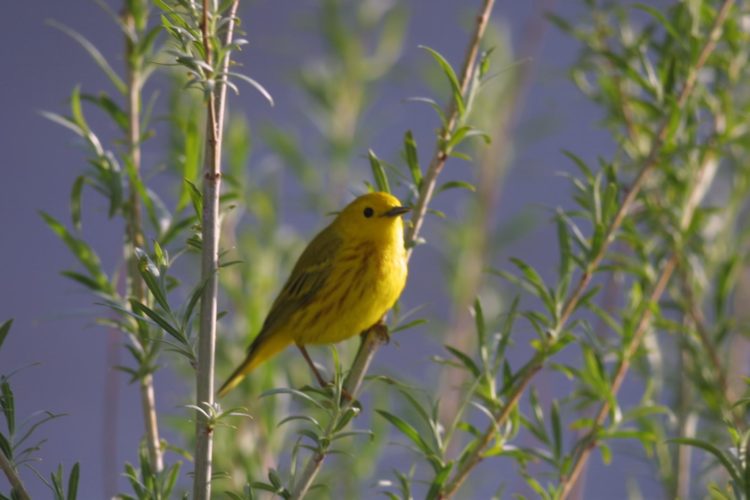We have much more to do and your continued support is needed now more than ever.
More Beavers Equals More Birds
In Western Montana, Birds Flock to Beaver Ponds

We know that beavers are busy critters. They build habitat for fish and wildlife when they create natural structures in streams and rivers that slow down and spread out water. And this furry keystone species also builds resilience to climate change by improving water availability and water quality.
In Montana, partners are discovering just how important beavers are for birds, too. The University of Montana’s Bird Ecology Lab in Missoula is documenting the differences in bird abundance and diversity in areas where beaver are active versus absent.
“Back in the 1950s, Ducks Unlimited recognized that beaver ponds are the key to waterfowl production across large parts of North America” -Anna Noson, avian ecologist with the Bird Lab.
Unfortunately, North America’s beaver populations are just 10% of their historic numbers due to extensive trapping that took place in the centuries before trapping regulations were put in place. But thanks to recovery and translocation efforts, many states in the East and Midwest once again support robust beaver populations. Most of the research on the relationship between birds and beavers has focused on these areas, and is less documented in western states. But beavers may be even more important for creating bird habitat in the arid West.
Spreading The Love (And The Water)
Wet areas comprise just 1-2% of the landscape in the western U.S. Yet more than 80% of all wildlife species depend on these “emerald isles” because they provide nutritious food, good hiding and breeding cover—and, of course, a water source. Ponds created by beavers are often the sole source of wetland habitat in dry states. In Montana, for instance, cavity nesting waterfowl like hooded mergansers, wood ducks and buffleheads are usually found breeding in beaver ponds.
Unfortunately, the West has lost many of these precious wet spots.
“I’ve seen some numbers that say we’ve lost as much as 90% of our riparian habitat in the West,” says Noson.
Prior to extensive unregulated trapping, western streams would have looked very different than what we see today. Rather than straight, narrow ribbons of green, beavers would have spread the water across the floodplain to create wide swaths of riparian shrubs. That means we would have seen more birds, too.

Slow Water, More Food
Noson became interested in the importance of beavers back in 2004 while counting birds on small streams—“the kind you can jump over”—as part of a statewide stream survey effort. She compared the breeding bird community across three different types of stream reaches in southwest Montana: active beavers, inactive beavers (with evidence of old dams and wet meadows), and no beaver activity.
“In the areas without beavers, the riparian corridor was really just one willow plant wide. But the active beaver reaches were full of ponds ringed by wetland plants and shrubs,” says Noson.
The bird abundance and diversity increased exponentially in the streams with old or active beaver sites. Noson found eight species typically associated with wetland and riparian habitats, such as belted kingfishers and blue-winged teals, along with several at-risk species like the sandhill crane.
Why are birds flocking to beaver ponds?
“Where there’s slow water, there’s more food,” says Noson.
Beavers ponds generate a much higher density of biodiversity than fast-moving water. Ponded areas allow more plants to grow and more insects to breed in the water and in the surrounding soil. In turn, these plants and bugs bring in hungry birds.

Restoring Beavers Brings in the Birds
Last year, Trout Unlimited asked the Bird Lab to help monitor Ninemile Creek, a stream in western Montana degraded from past mining activities that is now being restored. The goal is to document whether the restoration project benefits critters living alongside the creek as well as the fishing living inside the creek. Noson launched the monitoring project last May and June during birds’ breeding season. She set up counts along several different reaches, including a reference reach not impacted by mining with healthy habitat and plenty of beaver activity.
“I found an incredible diversity of birds utilizing the many beaver ponds in the reference reach,” says Noson.
This included an assortment of neotropical migratory birds, like warblers and willow flycatchers. In contrast, Noson found only a handful of species in the mining-impacted reaches where beaver hadn’t moved in yet. Here, the creek was channelized with steep banks, no ponded habitat, and a much narrower strip of riparian vegetation. Most of the birds she counted were conifer-dependent species rather than waterfowl or migratory birds that rely on riparian habitat.
“There’s no question mark—more beavers equals more birds,” said Noson.
Noson plans to continue monitoring birds along Ninemile Creek as Trout Unlimited restores the stream and beavers move downstream. By reconnecting the floodplain to the creek, beavers will have access to more food sources (woody shrubs and trees) and more room to build dams. And as the beavers do their job, they’ll bring in more birds, too.
How We Help
National Wildlife Federation is committed to helping beavers recover as an essential part of the western landscape by working in close cooperation with partners in Montana and beyond. To learn more: https://www.nwf.org/Northern-Rockies-and-Pacific-Region/Northern-Rockies
Also check out this recent webinar presented by the National Wildlife Federation and the U.S. Fish and Wildlife Service: Partnering with Beaver to Restore Fish and Wildlife Habitat.





















